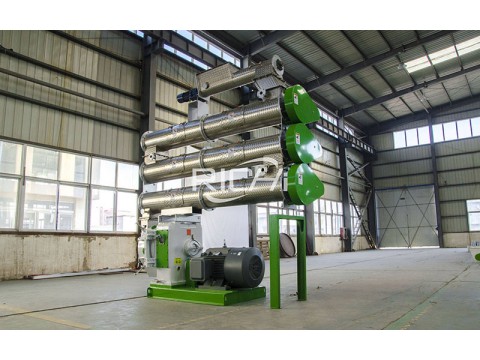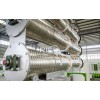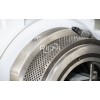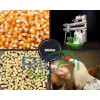Fish pellets usually have a diameter of 2.5 to 8.0 mm and a length of 5 to 10 mm, which can be fed directly. If the feed is damp, do not feed it directly, dry it or dry it before feeding it; if the feed has deteriorated, it should not be fed again to prevent fish poisoning after eating.

1. Features of fish feed production machine:
(1)Gear directly-connecting driving is adopted for high efficiency;
(2)Full stainless steel feeder; Variable pitch and anti bridging structure; Electromagnetic converter control;
(3)Stainless steel conditioner; axial steam spraying extends the conditioning time and cooking effect;
(4)Main gear and pinion shaft adopt the carbonizing quenching with high accuracy; smooth driving, low noise and long service life;
(5)Gearbox and driving holes' accuracy are guaranteed by specialized casting supplier.

2. Applications of the fish feed pellet machine
(1) It can not only produce various kinds of high quality feed pellets for fish, eel, shrimp, crab, loach, bullfrog, etc, and can produce many kinds of pet feeds for cat, dog, rabbit and etc.
(2)Common raw material can all be processed into aquatic feed pellets: rice dust, mustard cake, wheat chaff, maize, cotton seeds, fish powder, bone powder, innards and so on.
3.Working Principle of fish feed making machine for fish pellets
The feed ingredients run through feeder into conditioner and are mixed in the conditioner with hot steam, then they go into the pelletizing chamber through blanking taper slot. By scraper the powder material enters into the pelletizing zone. And then the material will be pressed by ring die and rollers into pellets. The pellets are discharged from the die hole and cut into the requested size by the cutter.

4. Main technical parameters of fish feed manufacturing machine:
(1)Pellets diameter: 2mm, 3mm, 4mm, 4.5mm, 5mm, 6mm, 8mm, 10mm
(2)Pellets shaping rate: ≥95%
(3)Pellets stability in water: ≥20Min
(4)Roller working temperature: ≤85℃
(5)Steam working pressure: 0.1-0.4Mpa

5. Selection of fish feed making raw materials
The selection of raw materials for fish feed should be based on the principles of high quality and low price, stable supply and convenient transportation. When conditions permit, the more types of raw materials, the better, so that the necessary amino acids in the feed can be balanced as much as possible, and the needs of fish for various essential amino acids can be met to the greatest extent. Must not use moldy and deteriorating raw materials. Moldy raw materials contain a lot of pathogens and toxins. For example, moldy corn contains highly toxic aflatoxin. These feeds can easily cause fish diseases after being fed. Although raw materials such as cottonseed meal and rapeseed meal are cheap and have high protein content, they contain anti-nutritional factors such as gossypol and glucosinolate respectively. Excessive use will affect the growth of fish, so the dosage should be limited, generally not more than 10%.
Many farmers like to use cheap oil residue and meatloaf, but these raw materials are mixed with a large amount of animal skins, which affects the smooth progress of the crushing and granulation process, and the fish is not easy to digest after eating. The fat contained in oil residues and meatloaf is saturated fat. Fish has a low utilization rate of saturated fat. Excessive intake of rancid fat can also cause fish to suffer from fatty liver and other diseases. Therefore, the amount of such raw materials should be control it below 5%. In addition, when selecting raw materials, attention should be paid to the moisture content of the raw materials. Excessive moisture will reduce the nutritional value of the feed, and may also lead to mildew of the feed and shorten the storage time of the feed.















